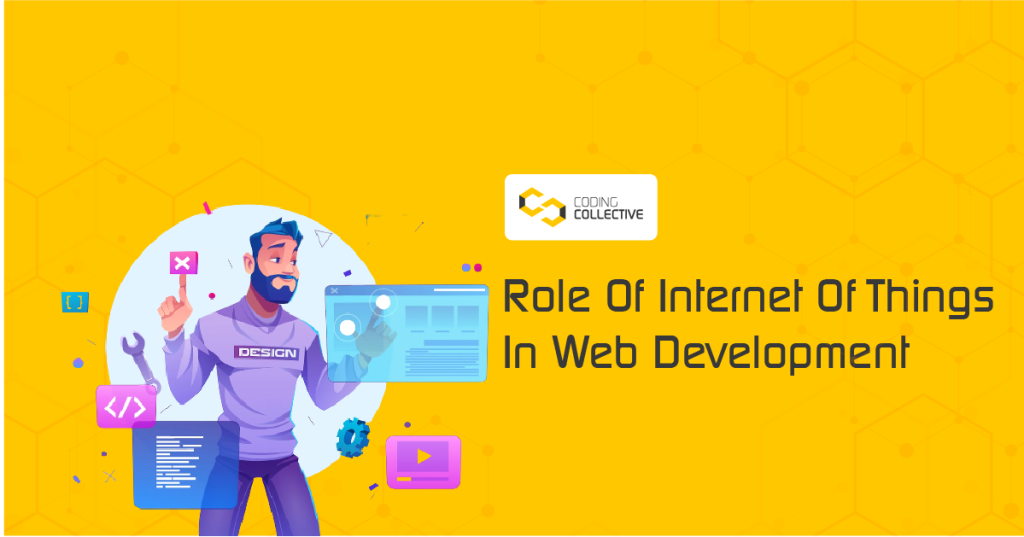
A. What is IoT
The internet of things, or IoT, is a network of interconnected computing devices, mechanical and digital machinery, items, animals, or people that may exchange data over the network without needing human-to-human or human-to-computer engagement. The term “thing” refers to any natural or artificial object that can be given an Internet Protocol (IP) address and has the ability to transfer data over a network, including people with implanted heart monitors, farm animals with biochip transponders, cars with built-in tire pressure monitors, and other examples. Organizations across various industries are increasingly utilizing IoT to run more effectively, better understand their consumers to provide superior service, boost decision-making, and raise the company’s value.
B. How does the IoT system work?
Four unique parts come together to form an IoT system: sensors/devices, connection, data analysis, and a user interface. The system works together as a whole because it is interconnected.
Sensors/Devices: Sensors or other gadgets first gather information about their surroundings. It may be as simple as a temperature reading or as intricate as a whole video feed. It is possible to combine many sensors or incorporate sensors into a device that performs additional functions in addition to sense. Your phone, for instance, contains a camera, an accelerometer, a GPS, and many other sensors, but it is not just a sensor. But something is gathering data from the environment in this first step, whether it’s a solitary sensor or a complete device.
Connectivity: The data is then uploaded to the cloud. The sensors and devices can be linked to the cloud via a number of different technologies, such as Ethernet, WiFi, Bluetooth, low-power wide-area networks (LPWAN), cellular, satellite, and WiFi. There are compromises between each option’s power usage, range, and bandwidth. The ideal connectivity method depends on the IoT application in question, but they all achieve the same goal: sending data to the cloud.
Data Processing: Once the data is on the cloud, software processes it in some way. It may be as easy as making sure the temperature reading falls within the allowed range. It could also be extremely intricate, such as employing computer vision to detect objects in a video (such as intruders in your house). What transpires, though, if the temperature is too high or if someone breaks into your home? The user takes a decision at this point.
User Interface: The information is then utilized in some way by the end user. This may be done by sending the user a warning (email, text, notification, etc). For instance, a text message alarm when the cold storage facility’s temperature rises too high. Additionally, a user may have access to an interface that enables them to routinely monitor the system. A user, for example, may like to monitor the video feeds in their home using a mobile application or a web application.
It’s not necessarily a one-way street, though. The user might also be able to take action and influence the system, depending on the IoT application. By using an app on their phone, the user might, for instance, remotely alter the temperature in the cold storage. Additionally, some tasks are carried out automatically. The system could modify the temperature automatically using predetermined rules, as opposed to waiting for you to do so. And the IoT system might automatically notify the appropriate authorities in addition to calling you to let you know there has been an intrusion.

C. Role of IoT in web development
The internet of things connects humans and machines to innovative learning. In order to make online architecture and user interfaces more imaginative and engaging, the IoT will now be incorporated into the web development sector. IoT will enable sophisticated connectivity between operational models and website designs. IoT includes a wide range of components, including sensors, cameras, signaling devices, etc. It will make sure to efficiently address consumer requests and provide the proper guidelines. Many IoT systems may be able to show website data and outcomes at this time. Laptops, intelligent home gadgets like air conditioners and microwaves, etc., and industrial screens like embedded systems are all included. It transcends all of these technologies and is essential to web development. Web development for the Internet of Things is more difficult than web design and development today. IoT web development has to cope with a lot of data, a lot of connectivity, security, constantly evolving user interfaces, and dependability challenges.
D. Scope of IoT in web development
Some essential factors that IoT will make changes in web development:
· Collecting and Analyzing High Volumes of Data: IoT systems collect and process enormous amounts of data since they employ sensors to gather data, which they then process before sending it via a cloud network. Systems are delayed if this type of data travels through ordinary websites. However, this data is analyzed and transferred through cloud networks in IoT-enabled equipment, thus system delays are not a concern. In contrast to traditional web development, IoT development places a greater emphasis on the stability and scalability of the network.
· Integrated UI Experience: Because technology is constantly changing, it is difficult to predict which User-Interface will function best on which platform. However, UI creation using IoT integration is effective, stylish, and provides consumers with a dynamic experience. With the current evolving trends, a web developer’s role also expands. To choose the popular one, the developers will have the option to conduct A/B split testing during development.
· Chatbots Integration and functional User Interactions: In recent years, the use of chatbots on websites has increased. These chatbots incorporate machine learning techniques to answer user queries devoid of human interaction. We can expect more beneficial outcomes in the near future as IoT usage in web development rises.
· Live support and Cybersecurity: IoT also provides exceptional cybersecurity, which helps to safeguard user and company data. Critical identification approaches will be made possible by modern websites with IoT to understand data misbehavior and attain security. IoT in web applications is renowned for streamlining the web development process and offering helpful security.
· Insightful support on Mobile Platforms: The Internet of Things can be used to remotely control equipment and provide valuable data. IoT facilitates interaction with devices and information sharing through perceptive analysis. such as cellphones, fitness bands, air conditioners, microwaves, etc. And they are all linked to the Internet, where they exchange information and improve the quality of human existence. It’s possible that almost all IoT-integrated gadgets can show website results.

E. Businesses that hire IoT developers
Singapore Technologies Engineering Ltd: Singapore Technologies Engineering Ltd. is a market leader in technology and innovation, providing high-caliber products and services to address pressing issues. Their wide portfolio of enterprises encompasses the aerospace, smart city, defense, and public security industries. They are well known as a tech, defense, and engineering group. Developers typically earn between $44k and 50k per year approximately.
Beyondsoft International Pte: Based on the mission of using technology to advance social progress, and economic growth, and to become a preferred partner for worldwide clients, Beyondsoft is dedicated to offering customers around the world complete solutions and products and creating the economic potential for customers to recognize ongoing business growth. The average salary in the organization is approximately $51k-55k per annum.
Microsec Pte Ltd: For IoT, IIoT, and OT devices and networks, the company offers unique Security by Design at the Edge services that include proactive inside-out attack prevention, thwarting zero-day device attacks, blocking device and network intrusions, building chains of trust among devices, and lowering operational risks and costs from the device to the cloud. About $46k to $51k per year is the organization’s average salary.
Interel Technologies Pte Ltd: By connecting utilities, objects, and people through the greatest technological ecosystem, Interel produces intelligent sustainable settings and is on a journey to empower businesses that design smart living spaces to use resources more effectively. The IoT connectivity architecture, integration platforms, and a tailored hardware array of smart thermostats and room controllers make up INTEREL’s smart building ecosystem. The average annual compensation in the company is between $50,000 and $55,000.
